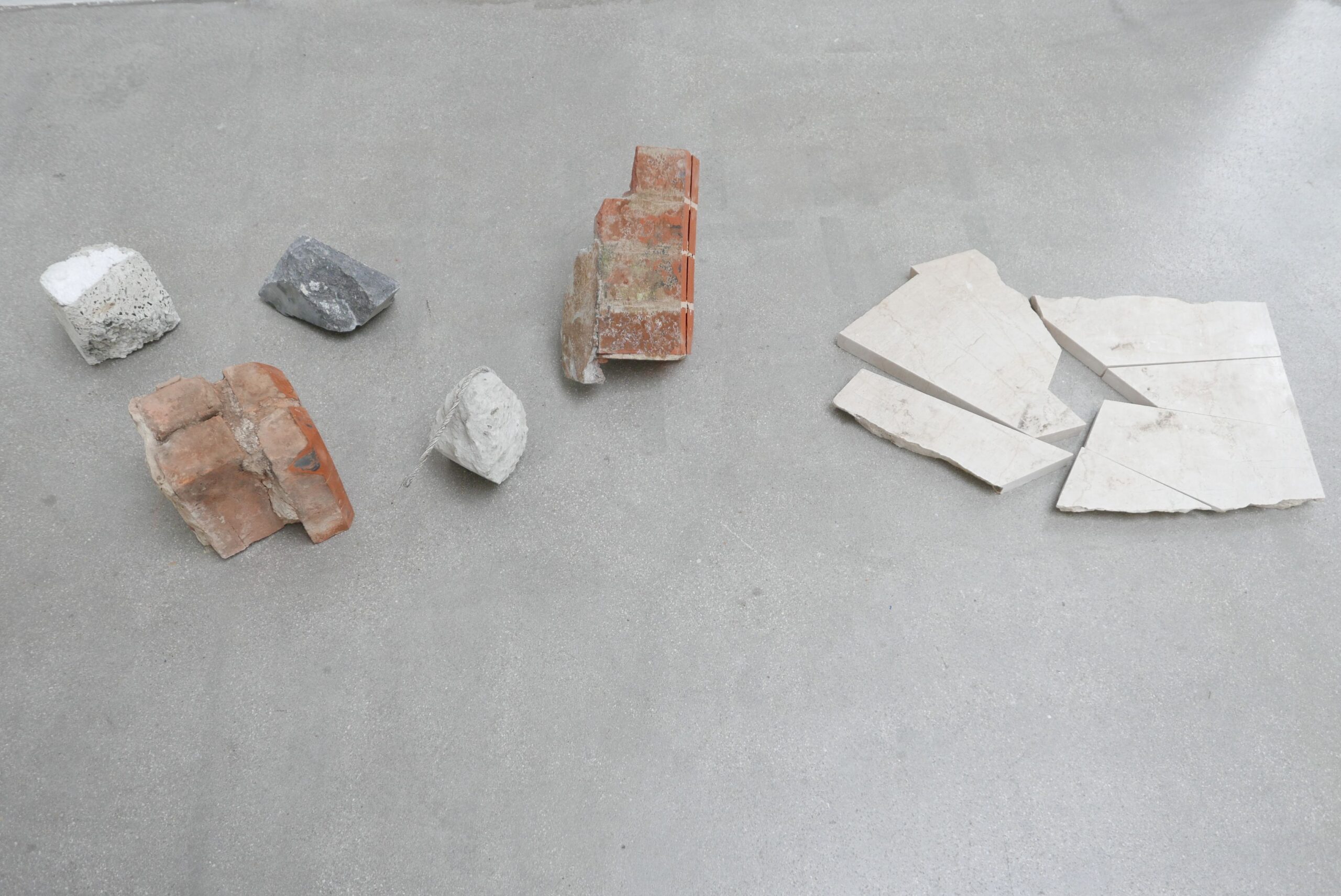In Contradiction, Together
The very title of the exhibition refers to an attitude that connects the work of Aglaia Konrad (A) and Willem Oorebeek (NL) in a way that is central and, paradoxically, also does not connect them. It is the principle of tolerance for and acceptance of the other. Married since 1991, the two artists have each developed on their own terrain, even though they have many points of contact and exhibited together, in Florence, for the first time back in 2011. Today they live and work in Brussels.
Aglaia Konrad captures her urban environment on analogue photographs and film footage. The images, which are taken at home and while traveling, are black and white explorations of situations that address the dismantling of cities. The shady sides of civilisation’s processes are given a face in these documentary images: for where the youthful continent of the ever-new grows with faith in progress, an abyss of disuse, what has been left behind and what has been consumed, opens up on the other side. Without controls this domain spreads rapidly. What happens at the interfaces between order and the dissolution of order, where the present has to face the material existence of the passing? With a calm and unbiased look at the special aesthetics of debris and destruction, Aglaia Konrad discovers relics of particular expressive power. She calls them RÜCKBAUKRISTALLE (crystals). These reworked Objets trouvés are surrounded by a special aura. They carry within them the potential of things that archaeologists could rely on one day. Konrad’s high sensitivity towards the sculptural values of architecture is further demonstrated in her SCHAUBUCH (showbook).1 Treks through numerous museums that Konrad undertook by between 2010 and 2017 have flowed into this personal archive of images. Here, she does not ignore the prerequisites of the relevant possibilities for reception. Museum situations with reflective showcase glass or reduced light are accepted as dispositifs and integrated into the overall compositions. However the openness towards the anarchy of a way of life is even more strongly manifested in the strips of images that capture unintended superimpositions. In the series Zweimal belichtet (double exposures) from 2013, the streets of Vienna and Cairo amalgamate into a single polymorphic street scene with changing horizons: Austrian snow lies in the Egyptian capital. Incongruities remain incongruous and yet have to be accepted.
In contrast, Willem Oorebeek is first and foremost a passionate printer and runs his own lithograph press. He is not so interested in the immediacy of producing images of what he has seen and experienced. Instead, the Dutch artist is characterized by his treatment of found images that have been generated and spread by the media of contemporary mass culture and thereby acquired a reality of their own. His graphic work raises crucial questions about the current production of images and its private/individual appropriation in people’s visual memories: What, for instance, does an image still represent today? Which images still claim iconic status in the exuberant image production of the present and which images vanish in the profusion of reproductions? His particular focus in this undertaking is on the possibilities and impact of iconoclastic gestures. Is the suppression of imagery still possible today? The series BLACKOUTS, ongoing since 1999, should be mentioned in this context.
Oorebeek immerses magazine pages that he finds particularly touching in black printing ink. So they remain concealed at first glance, and it is precisely this concealment from view that lends an insatiable appeal to finding the traces of the original print’s subject by shifting the viewing angle and looking for telling reflections of the light. So the iconoclastic gesture is inverted, becoming its opposite: it lends visibility! Resistance to wear and tear in a picture is also a theme pursued by Oorebeek in his work with reproductions of the Tower of Babel, the famous painting by Pieter Brueghel the Elder from 1568 that hangs in the Boijmans van Beuningen Museum in Rotterdam. Found in the Google archive of digital images, he printed it out in black and white on a standard sheet of A4 paper, some time later he then crumpled it up and threw it into the trash, subsequently picking it out again, unfolding it, scanning it and then enlarging it as a print, complete with all of the traces of materials left on the paper used. Finally, it was used as the template for a tapestry. Oorebeek calls this artistic act of increasing value through reproduction “Wieder Holung”.2
What both artists ultimately have in common is the far-sighted perspective of a future archaeology that asks what will be left one day of our fast-paced and unstable throwaway culture. What will our memories be relying on?
1 Konrad A., SCHAUBUCH: Skulptur, Roma Publications #303, 2017
2 Wieder = again, Holung = fetching; Wiederholung = repetition
Text: Heidrun Rosenberg 2019
translated by Jonathan Quinn
